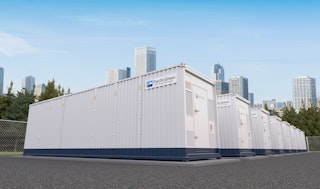
Investors looking for growth markets will no doubt be familiar with the sky-high curves predicted for a range of cleantech asset classes. But as we head into 2022, the numbers for energy storage are looking more attractive than ever.
The price of the technology continues to plummet, with researchers at the Bank of America charting price drops of 89% over the last decade. And market forecasts are all pointing in one direction.
Globally, analyst firm IHS Markit predicts annual additions of more than 30 GW by 2030, a 250% expansion on what is currently possible. Another firm, BloombergNEF, expects the industry will have installed a total 358 GW and more than 1 TWh by that time.
“This is the energy storage decade,” declared BloombergNEF’s head of decentralised energy, Yayoi Sekine, in November. “We’ve been anticipating significant scale-up for many years and the industry is now more than ready to deliver.”
Globally, analyst firm IHS Markit predicts annual additions of more than 30 GW by 2030, a 250% expansion on what is currently possible.
What about key markets? In the US, the Energy Information Agency reports there’s 14.5 GW of battery storage planned to come online between 2021 and 2024, while in China there is a 30 GW target for 2025.
In the UK, there’s more than 16 GW of battery storage capacity either in operation, under construction or being planned across more than 700 projects, representing north of 50% more than just two years previously, according to RenewableUK.
Our own contribution is already 1.1 GW barely a year after our battery storage market entry, and we expect this capacity to be fully in production by 2025. Unsurprisingly, investors are piling in to take advantage of this explosive growth.

Corporate funding into the battery storage sector stood at a staggering $11.4 billion in only the first nine months of 2021, was a 363% increase on the same period in 2020. But isn’t a bubble that’s about to burst—it’s only just getting started.
The Bank of America says that if we are to decarbonize the planet to the extent required by our climate goals then we will need 88 times more battery storage by 2050 than is currently available.
To achieve this, battery storage, which has so far done very well without subsidies, could get an extra push from governments keen to turbo-charge their energy transition plans.
One example that almost came good last month was the inclusion of an investment tax credit (ITC) for standalone energy storage projects in the Biden administration’s Build Back Better Act.
Although the Act itself is currently in limbo after failing to secure the backing needed for approval, observers believe certain parts of it may still go forward this year.
And if the ITC is one of them, then it could be “the single most transformative policy Congress can enact to accelerate storage deployments at the pace needed to decarbonise the nation’s power system,” according to the US Energy Storage Association.
Meanwhile, in the UK budget in November the Chancellor exempted energy storage, along with other clean technologies such as solar, from business rate rises. The incentive doesn’t kick in until April 2023, but this adds to signs that storage is being favoured by policymakers as well as investors.
This is true also of the way that the European Union has committed to supporting clean technologies in its Green Deal and announced changes to its state aid rules.
And on the other side of the world, the Australian Renewable Energy Agency has announced an AUD$100 million competitive funding round for grid-scale batteries with advanced inverters to support the grid.
Let’s remember that all this government interest is in support of an asset that can already make money of its own accord. If administrations are considering incentives to help a fast-growing market grow even faster, then what more encouragement do you need as an investor?
Publish date: 14 March, 2022